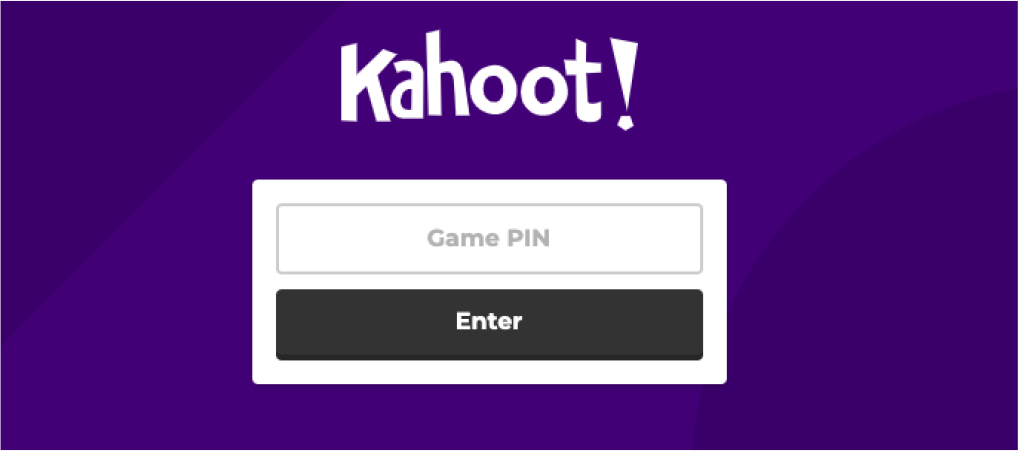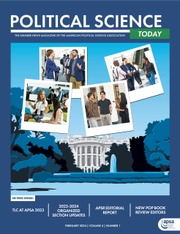Kahoot! is an instructional tool utilized regularly by instructors throughout the K-12 system in the United States to gamify their classes. Gamification is defined as “the use of game design elements in non-game contexts” (Groh, Reference Groh2012). Quantitative analysis has indicated that incorporating Kahoot! into undergraduate classes positively influences student interest in subject material (Bicen and Kocakoyun, 2016; Chaiyo and Nokham, Reference Chaiyo and Nokham2017) and reinforces core classroom concepts (Lin, Ganapathy and Kaur, 2017). The effectiveness of gamification has been shown in previous research to have a positive effect on student learning and goal achievement (Zhang and Yu, Reference Zhang and Yu2021). Over the course of the last five years, I have implemented the tool into my undergraduate political science classes. The service is cost-effective, familiar to large numbers of students from prior experience, and routinely is mentioned in a positive light in my course evaluations.
When included alongside traditional pedagogical methods (such as in-class discussion and quizzes), Kahoot! assignments ensure that students perform better on coursework by requiring students to recall knowledge learned throughout the semester in a rapid fashion. Testing in this fashion provides feedback for instructors and students about the overall level of preparations as well as the topics that need to be revisited before more sizable evaluations (e.g., mid-terms and final exams). The tool can be easily implemented into lower and upper-division classes in the political science curriculum. When seeking to engage students that are beginning college or are required to take coursework in Political Science outside of their major, establishing Kahoot! assignments represent a font of familiarity to previous coursework which may be the difference between success and failure in the course.
With Kahoot!, instructors can customize a learning experience with either time-limited or asynchronous options. Other changes professors can make to a Kahoot! involve the amount of points available for each question, the time afforded for students to answer (ranging from 5 seconds to 4 minutes), and whether the question includes visual or audible cues. Numerous question types are available such as True/False, multiple choice, and ranges as well as map-based assessments. Modes of customization available in paid tiers such as the “voice quiz,” team quizzes, and tournaments provide further options to professors. For example, incorporating audio into a Kahoot activity might keep student interest higher rather than relying on a singular instructor as an emcee. Setting up a Kahoot! Tournament running throughout the semester would keep student interest high while continuing to facilitate recall of earlier course material.


Screenshot of Kahoot! ‘play‘ homepage. Source: https://kahoot.it/.
Kahoot! fosters strategic thinking as a student’s choice can be locked in after they choose their answer. Participants will consider the risk and reward of rapidly answering–potentially gaining 0 points–or a more cautious (receiving fewer points the longer they consider their answer) approach. Establishing test-taking strategies before exams in this way provides students with a low-stakes lesson before high-value tests. As Kahoot! allows the assignment to be stopped at any point, in-class utilization of the service provides ample opportunity to explain why answers are correct. Lecture-heavy courses as well as flipped/student-led classes will benefit from this, as students that answer correctly can provide classmates with further understanding of the logic by which they chose their response (Crouch and Mazur, 2002).
EXAMPLE OF AMERICAN GOVERNMENT: NATIONAL
“American Government: National”, a survey course, is required at Southern Arkansas University for Political Science majors and minors alike. Criminal justice, sociology, and psychology majors are strongly suggested by their advisors to take the class, while other students are able to count the course as part of their electives. On the average, 150-300 students take AGN each semester spread out over multiple sections.
Before the mid-term and final exams, I bundle an in-class Kahoot! exam alongside a take-home vocabulary definition assignment. The Kahoot! contains multiple-choice questions focused on key terms and relevant course concepts along with popular culture and locally relevant topics. Completion of the Kahoot! quiz represents a student’s participation score for that day, while the top half of student scores are awarded with extra credit based on their placement. Students absent that day can take the assignment asynchronously for participation points.
Incorporating questions that are not direct evaluations of a student’s course knowledge—such as those about anime, sports, fashion, mass media (television, movies), video games, food, Youtubers, and local culture—act as a way to vary the overall tenor of the session while providing students with questions that may be easier to answer those about the course material. In my case, I typically assign one popular culture question per two questions concerning relevant American government subjects. Anecdotally, students that who may not perform well in the class or in traditional testing methods can remain interested in the Kahoot! session if they possess knowledge about one of the popular culture queries in the quiz.
During the beginning of each semester, I ask students to create an introductory post on our LMS. This post asks students about their personal hobbies, an interesting fact about themselves as well as the last media they consumed. When designing Kahoot! quizzes, I routinely refer back to these introductory posts as well as other (e.g., fashion choices such as band/logo t-shirts or themed accessories, pre/post-class discussion) cues that I pick up about students throughout the class.
DRAWBACKS FOR KAHOOT!
I have observed some negatives to assigning Kahoot! exams. As the in-person sections of my American Government National classes are offered at different times or days, cheating is a possibility. Kahoot! does offer solutions to this problem such as allowing instructors to randomize the quiz’s question order. Randomization is a sufficient deterrent for cheating in my Kahoot assignments as students seeking to cheat will lose considerable points searching for the correct answer, if they are able to locate it within the 20-second timeframe to answer a question. Teachers can also craft multiple versions of the assignment easily by building up a collection of questions on Kahoot!, hosting them in a question bank.
Whether due to insider information or possessing a firm grasp on the subject material, students achieving significantly greater high scores than rest of the class may impact the overall level of interest in the challenge. To mitigate any waning participant interest, Kahoot! provides routine updates to students as they proceed through the assignment, such as highlighting a player’s string of correct questions or a student performing well enough on a question to leapfrog others. Along with the top-5 leaderboard shown at the end of the game, these notifications ensure that students stay interested in the challenge. Another concern (albeit an uncommon observance) is when a student’s connection to Kahoot! “times out,” requiring the student to sign back in. This creates an acute problem—a student will likely miss a question, potentially impacting their final placement. A work-around to this is to consider the potential points lost when doling out any additional performance-based credit.
The numerous modes available on Kahoot! ensure that students requiring additional classroom assistance will be able to succeed. I repeat each question with emphasis on relevant terminology and operators (e.g., not; both) before the timer begins. The read-aloud function, available to those taking the “assignment” asynchronously, ensures the question and all responses are audibly presented.
While an overwhelming majority of students possess some device that can connect online, instructors can bring additional internet-capable instruments to ensure full participation. Similarly, providing internet access through a Wi-Fi extender or via a mobile hotspot while the Kahoot! is active may solve connectivity concerns.
CONCLUSION
A Kahoot! exam can easily fit into class session exceeding 45 minutes. Based on default settings, a 30-question quiz will take around 10 minutes to complete. This allows instructors to provide further explanation into the correct response. When students miss a question, I explain the issues with each incorrect response and refer them to the relevant sections of the reading. Instructors can also utilize the “reports” section after the end of the game to locate questions that stumped the class for a more detailed discussion. The latter option may be alluring for teachers that do not wish to interrupt the flow of the exercise.
Instructors should consider incorporating Kahoot! into their political science courses. The average undergraduate understands Kahoot!, as they have likely experienced the tool multiple times through their years of primary and secondary education. Students routinely express Kahoot! assignments as the most enjoyable assignment in my course evaluations: “The best aspect of the course was the Kahoots!;” “we used Kahoots! in high school and it was great to have them in Dr. McQuiston’s class.” Beneath Kahoot!’s bright exterior and catchy lobby tunes lies a method by which students can learn fundamental class concepts and practice test-taking in a low stress fashion.


